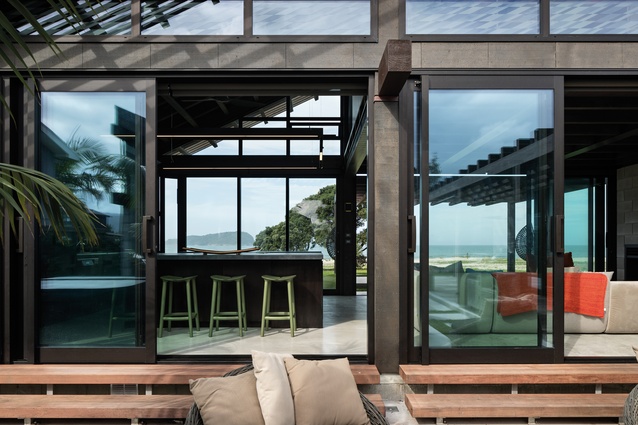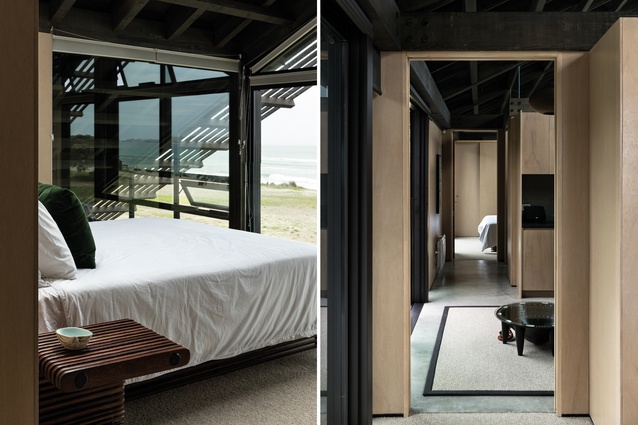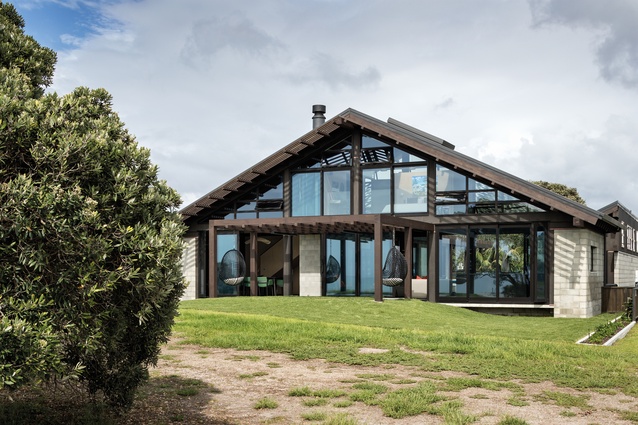Island roots: Pauanui Beach Home
This ocean home proudly displays its owners’ Polynesian heritage through well-considered architectural moves.
There is a sense of rightness, of belonging, that some houses manage to capture and this collection of pavilions on a waterfront site in Pauanui does just that. Buildings that reflect place and culture will always have this advantage. “Our clients have a Polynesian/Melanesian background and there is a strong component of that in the site layout,” says architect Richard Goldie of Peddle Thorp.
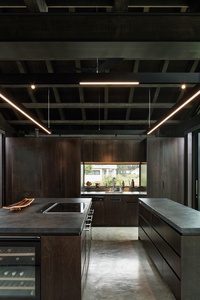
The entrance journey pays homage to that of the ‘pure’aga’ (a Rotuman village) with arrival via a walkway that skirts the central lawn with its outdoor cooking fire, the communal heart of the home. Three forms – a self-contained living wing and two bedroom blocks – cluster around this common open space and it doesn’t take a huge stretch of the imagination to see references to the ‘ri’ (house) in the main pavilion. Its robust, gentle-pitch gable with expressed bargeboards extends to form a porch and, internally, the rafters are exposed.
“Conceptually, it is about the spaces beneath the roof so there is a clear discipline to the height where the wall linings end and the open roof sits on top,” says Goldie. This structural framework is made of laminated timbers and dark-stained pine that is band-sawn.
“It has a hewn feel to it; we wanted to create a wooden building with Polynesian roots.” Steel bolts that join the beams are disguised with timber plugs so the house feels “handmade but not industrial”. And a stairway leading to the mezzanine master suite has treads made of coconut wood to further channel the island allusion.
But, while this holiday home looks to tradition for inspiration, it is also future focused. The couple has young teenagers, mum and dad own a home nearby and extended whānau are regular and most-welcome visitors. The separate ‘apei’ wing and detached ‘tefui’ pavilion were designed for maximum flexibility so the family can grow into the spaces throughout the years.
The building names have been taken from the Rotuman language. Apei is the name given to a sacred and precious mat made from fine white flax, used for special ceremonies and gifts. Tefui is a Rotuman garland that is worn around the neck at special occasions and ceremonies.
Since the house has a full-frontal view of the beach and the ocean, it may have been tempting to go to town on the glazing. Instead, glass has been used judiciously to capture the vista while maintaining privacy (there are close neighbours on both sides).
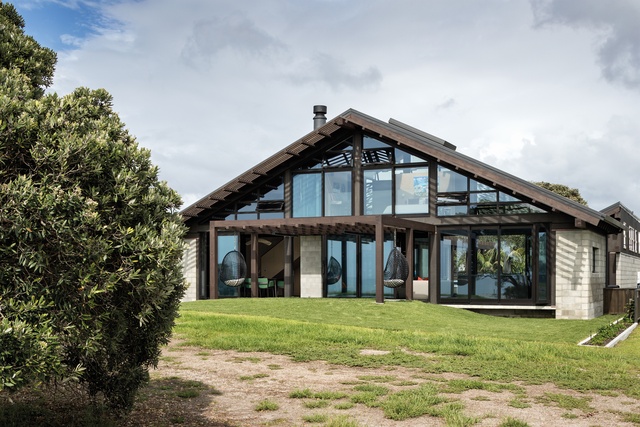
A patterned frit on the western façade of the main ‘ri fisi’ pavilion – meaning ‘white house’, a name given to a family home in Rotuma – replicates the shimmering sea. The shifting shadows it throws onto the waxed concrete floors make the owners feel as though they are living under water.
Rebecca Marsh and Tessa Pawson collaborated with the family on the interior design. “The clients wanted a place with a lived-in feeling where they could instantly feel relaxed,” explains Marsh. “They love entertaining.” And there’s plenty of opportunity for that.
Completed for Christmas 2017, the home has not only settled into the scenery but already operates like a well-oiled train station. Friends and relatives come and go, gathering at the breakfast bar or around the outside fireplace to help the owners cook up a feast.
In the kitchen, parallel benches allow for food preparation where large sliding doors extend the space connecting it to the beachfront or the goings-on in the internal courtyard. Slate benchtops, which will achieve a beautiful patina over time, are contrasted with smooth Meranti plywood cabinetry and continue the focus on natural textures. “But when you open the cabinets, there are bright-coloured melamine interiors, which is a bit of fun,” says Pawson.

Lighting the spaces was something of a challenge, given the pitched, dark-timber ceilings and lack of wall space. Suspended lighting was the main choice. “The piece that is most representative of our clients’ brief is David Trubridge’s Navicula pendant above the dining table,” explains Marsh. It floats like an amoeba suspended in an invisible ocean and also speaks to the island roots of the owners.
While the house has definite geometrical elegance to its design, there’s playfulness to be found here too. “I like to think that the interior reflects the owners’ personalities: bold, open, welcoming and cheerful,” says Pawson. “The kids don’t hold back; they run around and play all over the furniture, which is one way to tell you have succeeded with a design.”
Shots of burnt orange and forest green were adopted in the furnishings, including a harlequin rug, dining chairs, scatter cushions and a Husk armchair designed by Patricia Urquiola. This is a cosy space to snuggle in, whatever the season, to read a book, take sneak peaks at the view and then, perhaps, fall prey to the constant temptation to explore the underground wine cellar for just the perfect drop to accompany such literary pursuits.
It’s moments like these – both of solitude and of garrulous gatherings – that this beachside escape is designed to embrace. Structures house not only people but their histories, too, and there are, no doubt, many to come. “This is a home the owners have been planning for a long time. It’s their forever place,” says Goldie.

